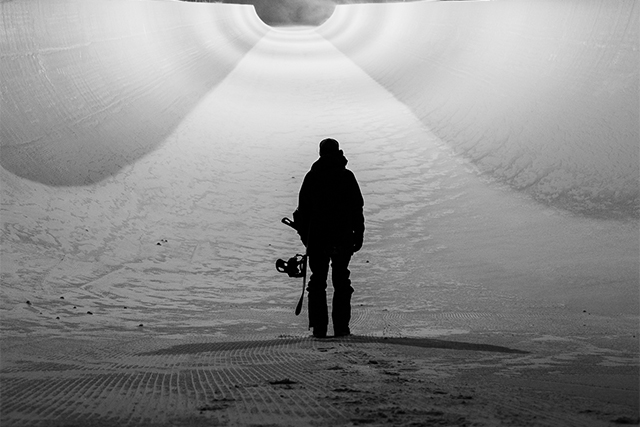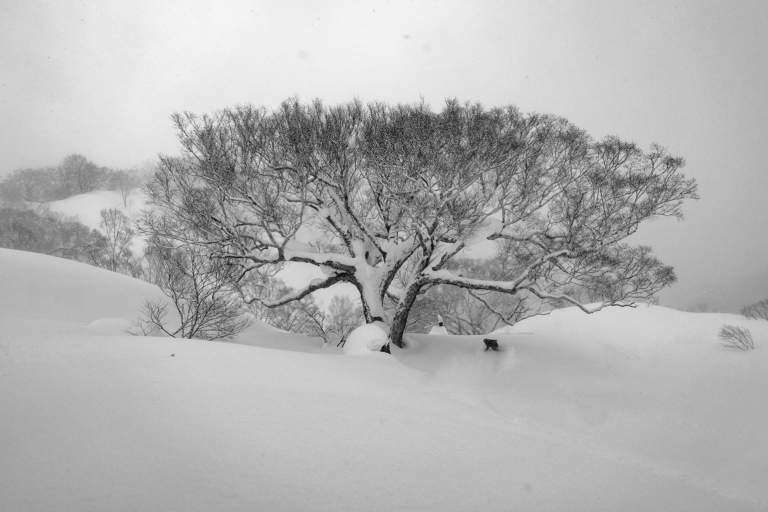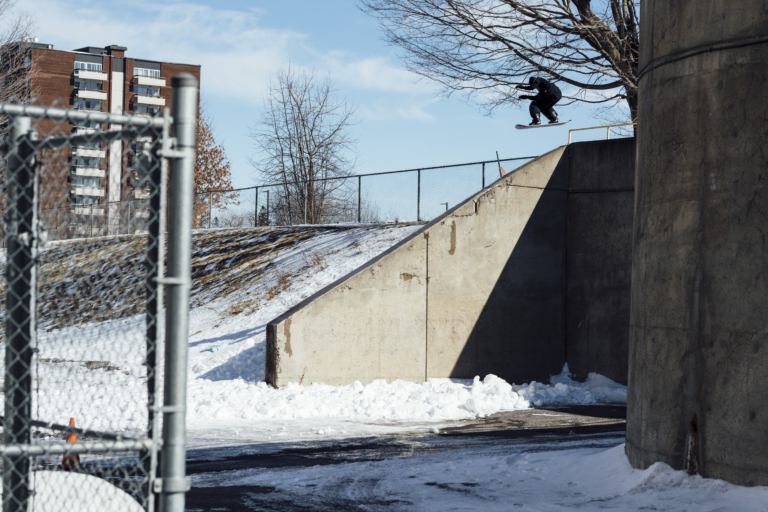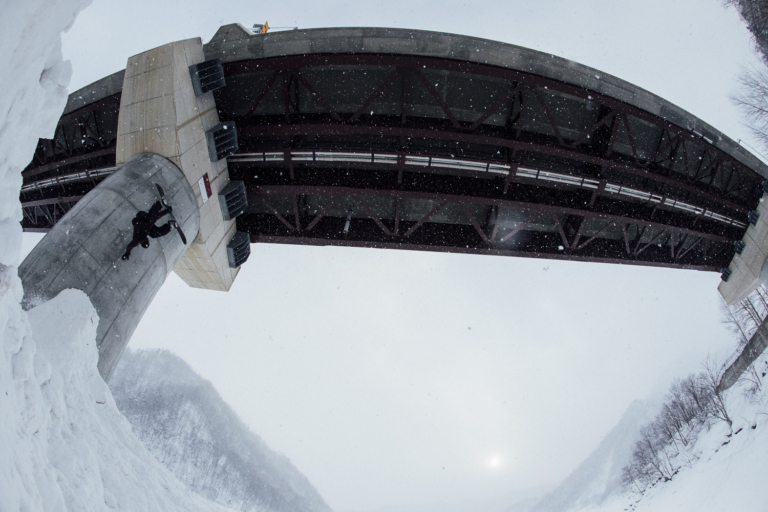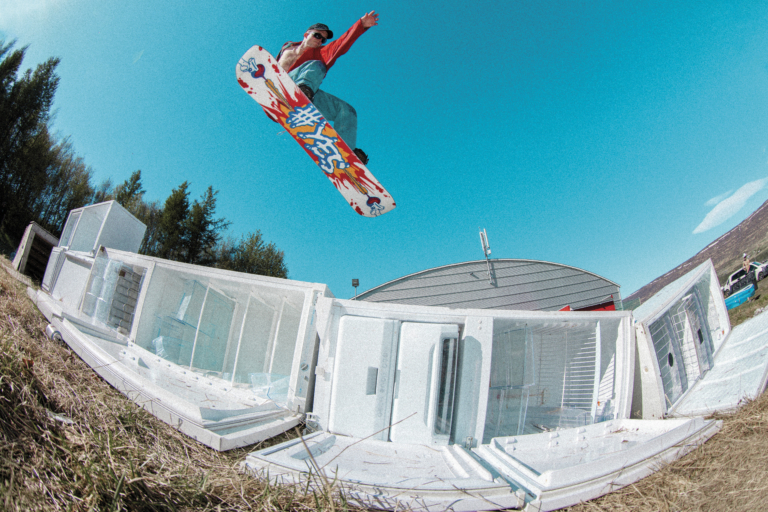There are some questions that humanity has always struggled to find answers for. Which came first: the chicken or the egg? What is the meaning of life? And why don’t women do the same tricks on a snowboard as men? At least it seems like the latter has such crucial meaning when reading articles like Whiteline Magazine’s recent debate on the topic. But after having several women stick 9s, 10s, and double backside rodeos at the Nine Queens event in Austria mid March, the question is: Do we still have to doubt progression in women’s snowboarding? And aren’t there other questions to ask, to start a more productive discussion? Spencer O’Brien, Kelly Clark, Kjersti Buaas and up-and-comer Klaudia Medlova took a deep breath, and sat down in Switzerland at the LAAX Ladies Session to give their answers.

So the Internet thinks there’s no progression in women’s snowboarding, right?
Spencer: I think we’re really kicking a dead horse with that conversation. People act like women aren’t out there doing their very best, but every single girl I know is trying her hardest to progress. So much has happened in the last ten years, even in the last year! Every girl in this room has pushed it; Kelly doing front 10s in the pipe, Klaudia landing double back rodeos, Kjersti landing front 10… it shows where the sport is going and how hard the girls are working to take it to another level.
But it seems like a lot of people are questioning the pace and the motivation. Why was all this possible at Nine Queens, but not before?
Kelly: I wasn’t at Nine Queens, but this discussion really reminds me of the four-minute mile story. Doctors were saying that the human body is physically not able to run a mile in less than four minutes. It took years and years of people trying to do it, and suddenly after one guy did it, 17 other people did it the same year. So I don’t think it’s necessarily a question of motive, it’s also a question of a breakthrough.
When men do something progressive that’s not quite perfect it’s not judged as harshly, and they’ll still come out on top. That never happens when a girl does something new. – Spencer O’Brien
Some people will claim, and I quote from the Whitelines article: “Women’s contest riding is strictly strategic; they have limited themselves because of the desire for success. No one is competing at the best level that they can, and this is why we see the same tricks year after year.”
Spencer: There is some truth to that, we have been doing similar runs for a while, but there have been many moments of progression that went unrewarded by the judges. Janna Meyen, cab 9 in 2009, Cheryl Maas back 9 in 2011, Sina Candrian front 10 at the Olympics, myself this year at X Games with back 9. Out of all those moments only Janna made podium in bronze position. I’m not saying we should forget about style and just reward hucking, but if you’re doing something new, it’s maybe not going to be perfect the first time. I think that’s taken into consideration for the men, but not for women. Look at Torstein, first triple in big air, almost butt check, hand drag, first place. Even Mark’s triple the next year, landed super heel heavy, hand drag, first place. When men do something progressive that’s not quite perfect it’s not judged as harshly, and they’ll still come out on top. That never happens when a girl does something new. It deters a lot of women from trying when progression is never rewarded. Our sport’s progression needs to be dictated by the riders, not the judges.
[juicebox gallery_id=”195″]
But now you could say: why doesn’t it happen outside of contests?
Kjersti: I always loved competing because I was thriving from that energy.
Spencer: There are moments in contests when you feel invincible. There’s so much pressure put onto you that it can take your riding to another level which is why you see so much progression from the guys in contests. It’s a unique energy that you can’t replicate outside of it.
Kjersti: Speaker Henry Jackson said something about big air that I thought was really clever: at a big air competition you have one jump, time to practice on it and it’s just one trick to focus on. So a lot of times tricks get landed there first and will then put in a slopestyle run. Maybe that would help women, if we would have a big air series.
Spencer: I think that’s super important. If you look at the last six years of men’s progression, every single new trick has been landed in a big air contest first. And a lot of times, the guys learn new tricks in the finals – not during practice, but during the actual event.
Kjersti: In the heat of a contest you sometimes get that extra kick that you need to push it. I was trying to learn a front 10 for so long and this year in Breckenridge I went up every day and told myself I’m going to do it. And I never got it! Then at Nine Queens, I saw Jamie. Of course I had seen videos of guys doing it before, but it was easier for me to visualize it because I saw her right in front of me, and it was easier to trust because she did it on the same jump. And instead of getting jealous, I got really inspired and motivated. And of course the jump was important: the landing at Nine Queens was really mellow and there wasn’t a huge impact, so I think that’s why a lot of the tricks were actually landed there.
